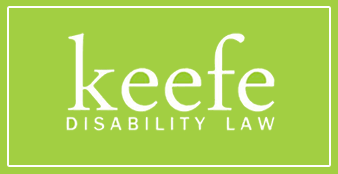
Apply for Social Security Disability Benefits for Severe Narcolepsy With the Help of Our Boston SSDI Lawyer
People who suffer from narcolepsy can sometimes struggle to maintain full-time employment. Narcolepsy is often misunderstood as a hidden disability. Some people may not take it as seriously as other recognized medical conditions. With daytime fatigue and sudden bouts of sleepiness, narcolepsy patients may want to apply for Social Security disability benefits. As the condition does not automatically qualify for benefits, people with narcolepsy can benefit from the assistance of our experienced Massachusetts disability attorney at Keefe Disability Law.
Understanding the Impact of Narcolepsy
Narcolepsy is a type of sleep disorder, and its severity can vary greatly. People with narcolepsy report sudden and recurrent episodes of extreme sleepiness during the day. They can feel very drowsy and struggle to stay awake for extended periods. They may also fall asleep without warning, sometimes in the middle of an important activity.
The Social Security Administration (SSA) also recognizes other characteristics of narcolepsy. Along with the irresistible urge to sleep, accessory events include loss of muscle tone, hallucinations, and sleep paralysis. People with narcolepsy may also experience changes in their rapid eye movement (REM) sleep patterns. There is no known cure for this long-term neurological condition.
Narcolepsy Symptoms That May Affect Gainful Employment
Some symptoms may make life difficult for people with the condition without directly impacting their ability to work. Other symptoms can severely affect their ability to participate in sustained substantial gainful activity (SGA).
For example, it could be hazardous for someone with narcolepsy to operate heavy machinery or to drive a commercial vehicle. If they suddenly fall asleep while operating a forklift or driving a semi-truck, this can be extremely dangerous for the people around them. They may fall asleep while cooking and burn or cut themselves. This can happen at any time. Extreme and uncontrollable drowsiness can be equally concerning. Periods of sleep can last a few seconds or up to 30 minutes.
Even if they continue to appear conscious, people with narcolepsy may fall asleep but continue performing an activity. For instance, accountants and writers may continue typing at a computer, but the output may be gibberish. This is one example of narcolepsy as an invisible medical condition, as it may not be visually apparent to observers. Along with falling asleep, people with narcolepsy often display cataplexy. This sudden loss in muscle tone can result in total collapse, even if they are still conscious.
Narcolepsy patients may also experience hypnagogic hallucinations in the period between sleep and awakening. If they cannot trust their senses, they may perceive things in their work environment that aren’t there. The hallucinations can be frightening and disturbing. With adequate severity of symptoms, narcolepsy may meet the criteria to qualify for SSDI benefits.
Narcolepsy and the SSA Blue Book of Medical Conditions
While not necessarily easy, one of the most straightforward ways to qualify for disability benefits is to meet a listing in the SSA Blue Book. The Blue Book describes a range of medical conditions that may be eligible for Social Security Disability Insurance (SSDI). The listings outline qualifications, definitions, severity ratings, and evidence requirements.
The Blue Book contains sections for speech disorders, cardiovascular disorders, mental disorders, and more. Unfortunately, narcolepsy is not among the conditions in the SSA Blue Book. To qualify for SSDI benefits, people with narcolepsy must prove their level of disability in other ways.
Proving the Severity of Narcolepsy as a Qualifying Disability
One way to justify a disability claim not in the Blue Book is through a residual functional capacity (RFC) assessment. Your doctor completes the RFC form after completing a thorough physical exam. They provide their opinion on your abilities and impairments, describing how your limitations may prevent you from participating in full-time employment. This includes physical abilities, as well as mental and sensory impairments. Sudden cataplexy and extreme drowsiness can severely limit someone’s employment prospects.
Severity, Duration, and Frequency of Episodes
Key to this process is proving the frequency and severity of narcolepsy symptoms. While not the same, the Blue Book listing for epilepsy provides some context for what may qualify for benefits. The states of altered consciousness also impact a person’s ability to work effectively at their job.
For instance, applicants with epilepsy may need to show they have generalized tonic-clonic seizures at least once a month for three consecutive months. The listing also describes limitations in maintaining focus and concentration, understanding or remembering information, or interacting with others. To equal the listing for epilepsy, people with narcolepsy will need medical evidence that supports similar criteria.
Medical-Vocational Allowance and ADA Accommodations
An RFC form allows SSDI applicants with secondary conditions like narcolepsy to qualify under a medical-vocational allowance. This considers additional factors, like the applicant’s age, work history, and educational background. The SSA is more likely to approve an older applicant with a narrower work history who may struggle to pivot to a different career. By contrast, the SSA believes it is easier for younger applicants to adapt and re-train for other jobs.
Before the SSA approves an application for SSDI, they want to see that the applicant has exhausted their other options. The younger applicant may get vocational training for a job they can do despite having narcolepsy. Similarly, the Americans with Disabilities Act (ADA) requires employers to accommodate workers with disabilities reasonably. If the workplace can adapt to an employee with narcolepsy, like changes in shift schedules or providing extra breaks for naps, the applicant may not qualify for disability benefits.
Acceptable Sources of Extensive Medical Evidence to Prove Your SSDI Claim
One of the most common reasons the SSA denies a disability claim is a lack of medical evidence. It’s vital to work with an experienced Boston SSDI lawyer who can help you collect and compile reputable medical evidence to substantiate your claim. This supporting documentation must come only from medically acceptable sources.
Examples of valuable evidence in a narcolepsy SSDI claim may include:
- A formal diagnosis of narcolepsy by a licensed medical professional
- Medical records that outline the frequency and duration of narcolepsy symptoms
- Polysomnography results from an in-depth sleep study
- Other lab and test results, like EEGs, genetic tests, and lumbar puncture results
- List of current medical treatments, therapies, and medications
- Detailed history describing the progression of symptoms and their treatment
- A detailed doctor’s note from your family physician
- RFC assessment stating how symptoms impact your ability to work
Some of the medical evidence helps to substantiate the severity of your narcolepsy symptoms. Other evidence, like genetic tests, can help to rule out other conditions that may cause drowsiness, like sleep apnea.
As there is no known cure for narcolepsy, a detailed treatment history shows the SSA you are doing everything you can to manage your narcolepsy symptoms, and you are still unable to work. Medications your doctor may prescribe include stimulants like Sunosi, antidepressants like Pristiq, and oxybate salts like Xywav. They can help relieve cataplexy and improve nighttime sleep.
Completing a Social Security Disability Application With an Experienced SSDI Lawyer
Many people find filling out an application for disability benefits confusing or strange. The form may contain unfamiliar jargon, and applicants may miss or misinterpret instructions. Working with the adept SSDI lawyers at Keefe Disability Law helps avoid common mistakes that may lead to denials.
With insufficient medical evidence, SSA employees may deny SSDI claims for technical errors. Applicants may have a current income that exceeds SGA limits, need to earn more work credits to qualify for SSDI, or perhaps other technical mistakes led to an incomplete application. This can be a frustrating and time-consuming process.
A Boston-area SSDI attorney can review your application for typos and mistakes, verify its completeness, and offer advice on how to strengthen your claim. While the SSA may not explicitly name narcolepsy as a qualifying condition for disability benefits, you may still be eligible if the symptoms prevent you from working. We encourage you to discuss your case with us further during your free consultation.

